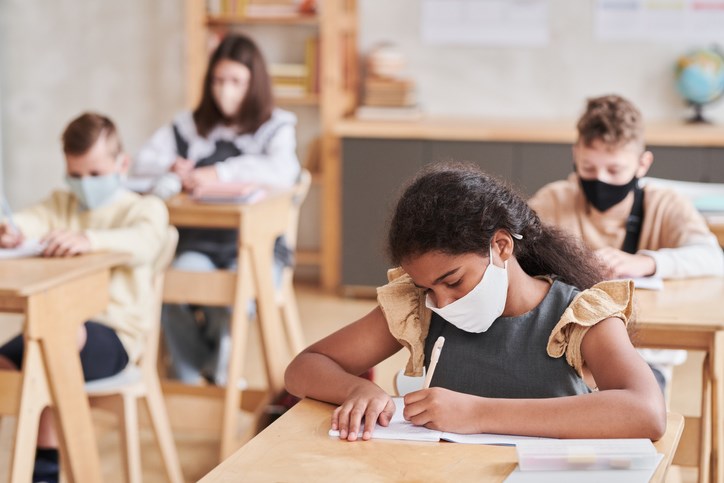Health officials in Surrey assert children have not been significant transmitters of COVID-19 in schools, based on an analysis of lab-confirmed cases reported in students since January.
Overall, 90% of school-associated COVID-19 cases in Surrey originated in households or the community, not in schools, according to a report issued by Fraser Health Tuesday, on the same day the provincial government announced its back-to-school plans for COVID-19 mitigation.
However, the study does not factor in the ‘Delta’ variant, which has taken hold in the province since schools closed for the summer in late June. And it’s that Delta variant, plus children under age 12 not being vaccinated, that has sparked concerns from independent infectious disease experts, as schools are set to re-open.
The study looked at the 3,287 cases found in enrolled students and staff within the Surrey and White Rock health areas since January and until the end of June. It then excluded any case that was not involved in a so-called school cluster, which is at least one in-school transmission event identified in a 14-day period in a school.
In the end, Fraser Health claims 299 students and staff “likely or possibly” acquired the virus from school among the 438 cases associated with confirmed clusters.
Of the 299 cases, one quarter of them were unclear in the “directionality of transmission,” whereas 46.2% were believed to be student-to-student; 13.4% staff-to-student; 9.7% student-to-staff; and 5.4% staff-to-staff.
The report notes 72 of Surrey’s 169 schools had a reported cluster, which is typically just two cases. One late spring outbreak involving 64 cases in one school was reported. It was that outbreak that resulted in the only time school-associated cases delineated from overall cases reported in the Surrey community.
“Our review shows schools are safe for students, teachers and staff. Of the small minority of the school population that did get COVID-19, most of them acquired it at home or in the community and had limited spread within schools,” says Dr. Ariella Zbar, medical health officer for Fraser Health. Zbar added student cases declined as cases fell in the community upon higher vaccination coverage.
It remains undetermined if these findings will be reflective of the new school year as the more transmissible Delta variant takes hold.
Students were bound to cohorts, and high schools had staggered in-class learning. Those measures will not be in place this school year nor will other physical distancing measures. Kids beyond Grade 3 will require masks, however.
Provincial Health Officer Dr. Bonnie Henry said Tuesday that the level of protection afforded to unvaccinated kids in schools will depend largely on the level of vaccination among staff and parents (to prevent the virus from entering classrooms).
The B.C. Teachers Federation is calling for more robust vaccination, including clinics in high schools. The provincial government hasn’t made vaccinations a requirement of employment in schools.
Last week, the BC COVID-19 Modelling Group, formed of math and infectious disease experts largely from Simon Fraser University, University of Victoria and University of B.C., stated modelling indicates unvaccinated children are set to see their infection rates rise with the Delta variant.
“Delta’s increased transmissibility and increased severity. The situation in the U.S. with kids in schools is really different than it was last year,” said modeller and SFU mathematician Dr. Caroline Colijn last week.
The vast majority of future cases (not hospitalizations) are expected to be among children, who remain an unvaccinated population, the group stated, adding numbers will reflect rates in the community.
When the pandemic began in B.C., schools faced much more significant restrictions. Children were initially kept home and in-home learning was implemented. A week after school started in September 2020, with most students returning to class, B.C. had recorded 6,724 total COVID-19 cases, 8% of which were found in children aged 0-19. By June 26 there had been 147,571 cases, of which children accounted for 17%. Overall, infections in children past September 2020 aligned with their 19% portion of the total population.



